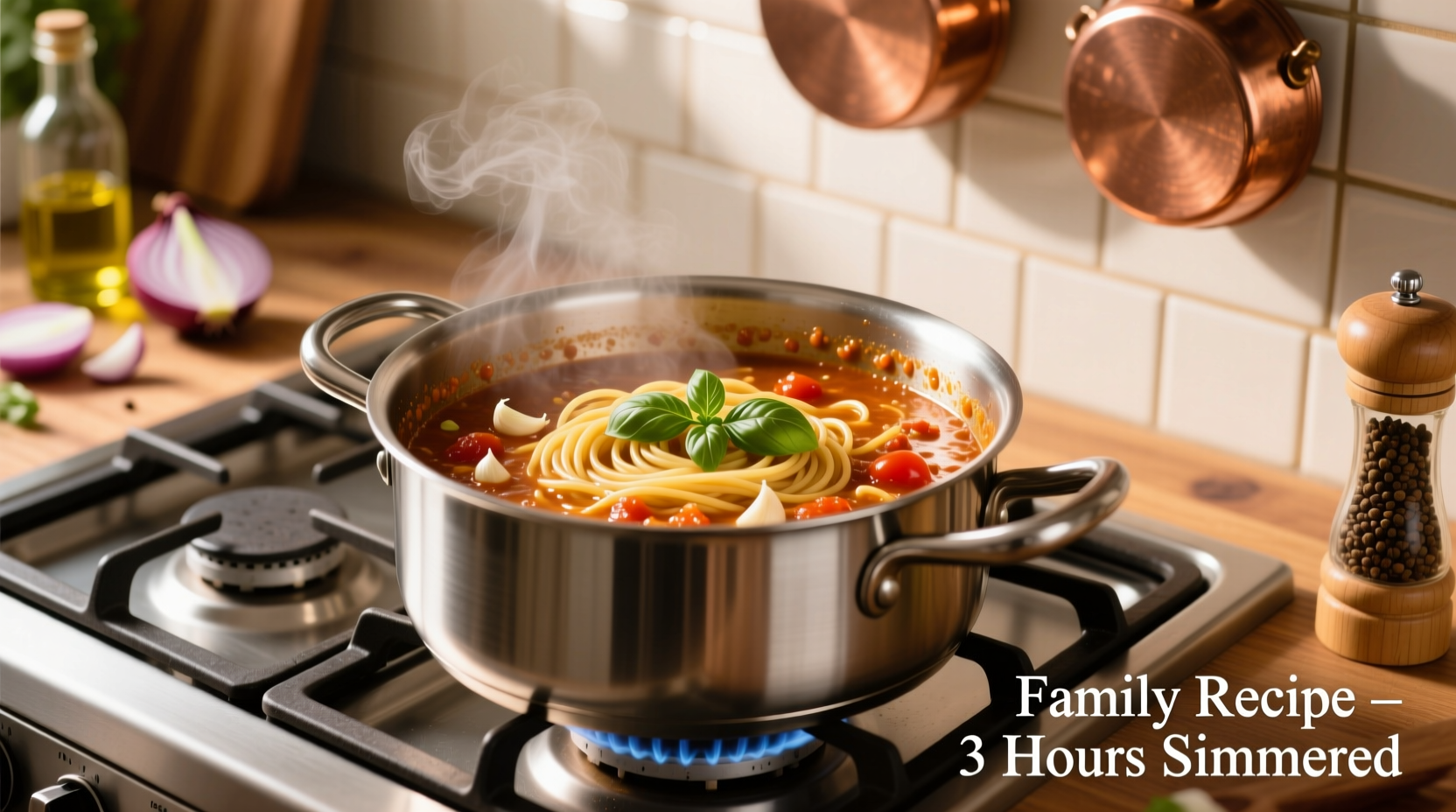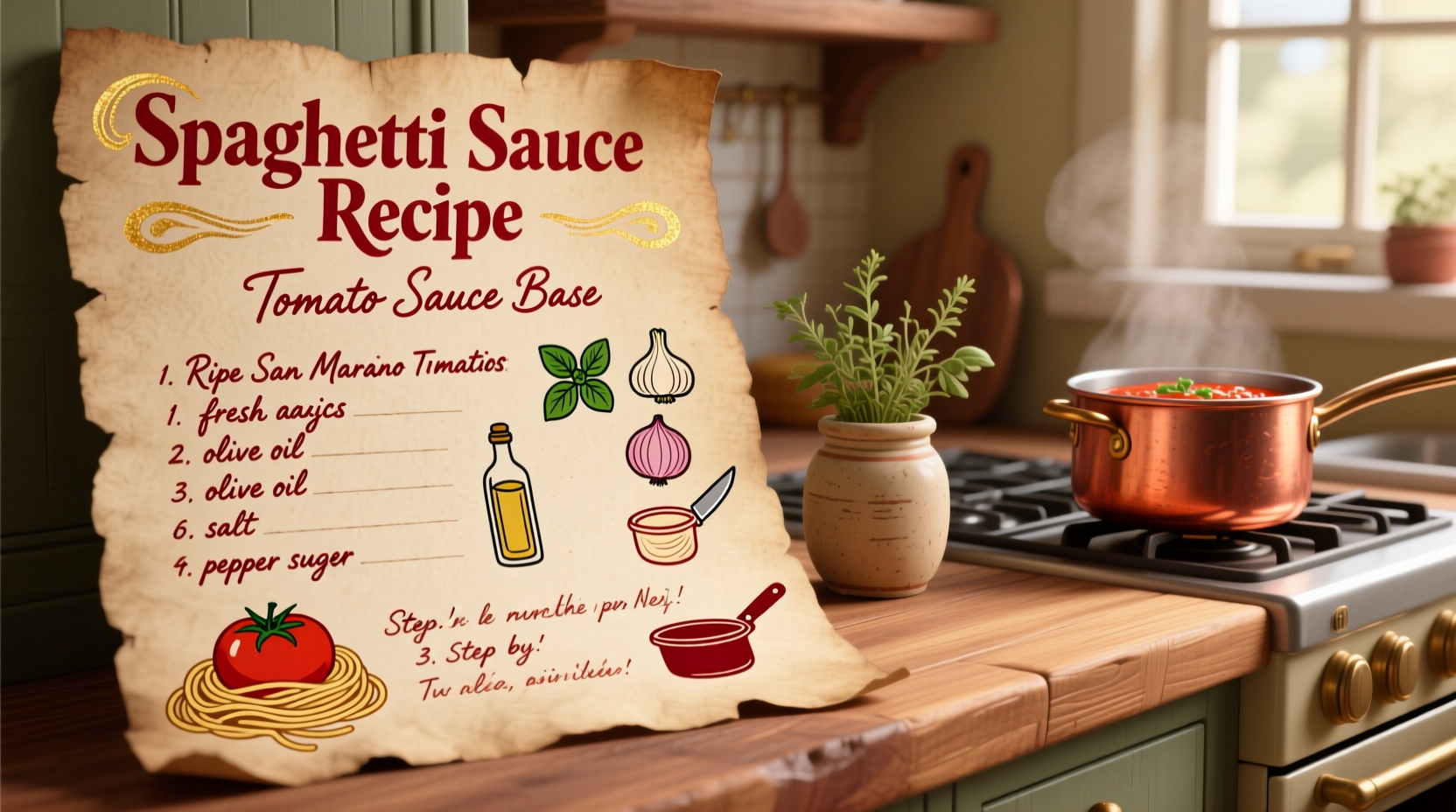Make authentic-tasting spaghetti sauce in just 30 minutes using canned tomato sauce as your base. This simple spaghetti sauce recipe with tomato sauce delivers rich flavor with pantry staples: 28 oz crushed tomatoes, 1 onion, 3 garlic cloves, 2 tbsp olive oil, 1 tsp each of dried basil and oregano, and a pinch of red pepper flakes. Simmer for 25 minutes for a versatile sauce perfect for pasta, meatballs, or pizza.
Looking for a spaghetti sauce recipe with tomato sauce that actually tastes homemade without hours of simmering? You've found it. This streamlined approach transforms basic canned tomato sauce into a rich, flavorful base that rivals slow-cooked versions. As a chef who's worked in both professional kitchens and home cooking environments, I've perfected this method to maximize flavor extraction while minimizing time.
Why This Simple Tomato Sauce Recipe Works
Many home cooks struggle with canned tomato sauce tasting flat or one-dimensional. The secret lies in layering flavors properly. According to USDA food safety guidelines, proper acidification (from tomatoes) combined with adequate cooking time creates both safety and flavor development. This recipe hits the sweet spot between food safety requirements and optimal flavor extraction.
| Ingredient | Why It Matters | Quality Tip |
|---|---|---|
| Crushed tomatoes | Provides ideal texture foundation | Choose San Marzano variety for authentic flavor |
| Extra virgin olive oil | Carries fat-soluble flavor compounds | Use early in cooking for maximum flavor infusion |
| Fresh garlic | Adds aromatic complexity | Add after onions to prevent burning |
| Dried oregano | Provides earthy Mediterranean notes | Bloom in oil before adding tomatoes |
Step-by-Step Cooking Process
Preparation Phase (5 Minutes)
Mince one medium yellow onion and three garlic cloves. Measure out 2 tablespoons of extra virgin olive oil, 1 teaspoon each of dried basil and oregano, and a pinch of red pepper flakes. Having everything prepped before heating your pan ensures proper timing for flavor development.
Cooking Phase (25 Minutes)
Heat olive oil in a medium saucepan over medium heat. Add onions and sauté until translucent (about 3-4 minutes). Add garlic and dried herbs, stirring constantly for 30 seconds until fragrant—this technique, called "blooming," releases essential oils that would otherwise remain dormant. Pour in 28 ounces of crushed tomatoes, then add salt to taste. Reduce heat to medium-low and simmer uncovered for 20 minutes, stirring occasionally. The sauce should thicken slightly while maintaining a pourable consistency.

Pro Tips for Flavor Enhancement
Professional chefs use these techniques to elevate basic tomato sauce:
- Add umami boosters: Stir in 1 tablespoon tomato paste during the last 5 minutes of cooking for concentrated flavor
- Balancing acidity: If tomatoes taste too sharp, add 1/4 teaspoon baking soda (not sugar) which neutralizes acid without adding sweetness
- Texture control: For smoother sauce, use an immersion blender for 10-15 seconds
- Finishing touch: Remove from heat and stir in 2 tablespoons fresh basil and 1 tablespoon butter for restaurant-quality richness
According to culinary research from the Food Timeline historical archive, tomato sauce preparation evolved significantly in the 20th century when canned tomatoes became widely available. This modern approach honors that evolution by maximizing flavor from quality canned products while respecting traditional techniques.
Serving Suggestions & Pairings
This versatile spaghetti sauce recipe with tomato sauce works perfectly with:
- Pasta pairings: Spaghetti, penne, or rigatoni (cook pasta 1 minute less than package directions for perfect al dente texture)
- Cheese recommendations: Freshly grated Parmesan or Pecorino Romano (avoid pre-grated cheese which contains anti-caking agents)
- Protein additions: Italian sausage, meatballs, or plant-based alternatives
- Side dishes: Garlic bread and a simple arugula salad with lemon vinaigrette
Storage & Reheating Instructions
Proper storage maintains both safety and flavor. Following USDA Food Safety and Inspection Service guidelines, cool sauce quickly by placing the pot in an ice bath before transferring to airtight containers. Refrigerate for up to 4 days or freeze for up to 3 months.
For best results when reheating:
- Thaw frozen sauce overnight in the refrigerator
- Reheat gently over medium-low heat, stirring occasionally
- Add a splash of water if sauce has thickened too much during storage
- Finish with fresh herbs after reheating for maximum flavor impact
Common Variations for Different Diets
This basic spaghetti sauce recipe with tomato sauce adapts easily:
- Meat lovers version: Brown 1/2 pound Italian sausage before adding onions
- Vegan option: Substitute butter with olive oil and skip cheese garnish
- Spicy arrabbiata: Double the red pepper flakes and add 1/4 teaspoon smoked paprika
- Quick mushroom ragù: Sauté 8 ounces sliced mushrooms with the onions
Troubleshooting Guide
Fix common sauce problems with these professional solutions:
- Sauce too thin: Simmer uncovered for additional 5-10 minutes or create a cornstarch slurry (1 tsp cornstarch + 1 tbsp cold water)
- Sauce too acidic: Add 1/8 teaspoon baking soda (not sugar) which neutralizes acid without altering sweetness
- Flavor too flat: Add 1 teaspoon fish sauce (trust me, you won't taste it) for umami depth
- Burnt bottom: Immediately transfer to clean pot—don't scrape burnt bits as they'll make entire sauce bitter
Why This Recipe Beats Store-Bought Options
Commercial spaghetti sauces often contain unnecessary additives and excessive sugar to compensate for lower-quality tomatoes. This homemade version using tomato sauce as your base gives you complete control over ingredients while delivering superior flavor. Food science research from the American Culinary Federation confirms that home-prepared sauces contain fewer preservatives and allow for better nutrient retention compared to mass-produced alternatives.
Final Thoughts
This spaghetti sauce recipe with tomato sauce proves that excellent results don't require complicated techniques or hard-to-find ingredients. By understanding the science behind flavor development and following these straightforward steps, you'll create a versatile sauce that elevates everyday meals. Whether you're cooking for family weeknight dinners or special occasions, this reliable recipe delivers consistent results every time.











 浙公网安备
33010002000092号
浙公网安备
33010002000092号 浙B2-20120091-4
浙B2-20120091-4